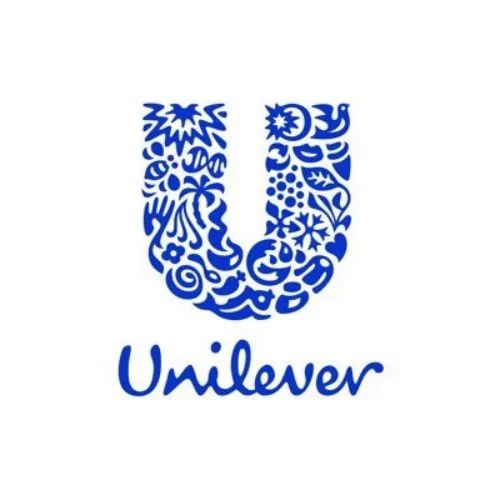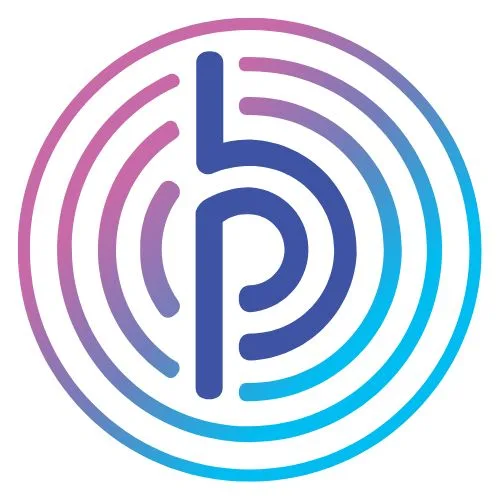- DISC Based Workshops
Communication Skills using DISC
Master workplace communication skills with DISC, tailoring strategies for improved understanding and interaction.

People Trained
DISC Reports - Customer Service Version
Industry Sectors Covered
Companies using the highly acclaimed TTI Success Insights DISC Reports
Elevate Your Communication Skills using DISC
This in-depth workshop provides attendees with the necessary skills to manage interpersonal communication, focusing on understanding varied behavioral/emotions styles using DISC profiling. Participants will gain insights into adapting their communication styles to meet diverse needs, ensuring productive and harmonious interpersonal relationships at work.
- Free 1 Hour Consultation
- In-Person or Virtual
- Fully Customised
Course Content
DISC for Communication Skills Excellence is an in-depth program aimed at boosting communication skills using the DISC framework. This interactive workshop provides learners with essential skills to recognize and adapt to different communication styles, enhancing interactions and understanding in diverse settings. By focusing on DISC profiling, participants gain insights into various behavioral patterns and learn to adjust their communication approaches for more effective dialogue. The course emphasizes practical techniques for active listening, clear messaging, and constructive feedback, ensuring participants are well-equipped to navigate and optimize communications in any professional environment.
Introduction to DISC
Brief introduction of DISC, its construct, history and applications.
DNA of DISC Assessment
Dominance, Influence, Steadiness & Compliance - Core DNA of DISC Profiles.
Self-Discovery using DISC
Discovering personal strengths and weaknesses using your own DISC profile.
Communication Styles
Techniques to align with various DISC-driven communication preferences.
Active Listening Skills
Mastering the art of listening for improved mutual understanding.
Effective Verbal Communication
Crafting and delivering messages clearly and persuasively.
Non-Verbal Cues and DISC
Interpreting and utilizing non-verbal signals in communication.
Conflict Resolution with DISC
Leveraging DISC for resolving disagreements constructively.
Conflict Resolution Techniques
Giving and receiving feedback tailored to DISC profiles.
Cultural Sensitivity in Communication
Applying DISC in diverse cultural contexts covering various nuances.
Empathy and EQ usign DISC
Developing empathy and EQ using techniques aligned with DISC profiling.
Post Training Action Planning
Creating a personal plan to apply DISC strategies in real-world scenarios.
Who should attend?
- Managers & Supervisors
- Human Resources Professionals
- Project Managers
- Sales & Marketing Professionals
- Technical Professionals and Engineers
- Educators and School Administrators
Key benefits
- Improved Communication
- Enhanced Understanding of People
- Increased Team Efficiency
- Strengthened Relationships
- Effective Conflict Resolution
- Greater Adaptability & EQ
Course methodology
- Instructor-led Facilitation
- Cohort Learning - Synergogy
- Case Work & Scenarios
- Interactive Real Play
- Personal Reflection and Action Planning
Course materials
- Personal DISC Profile Report
- Participant Workbook
- Case Study Booklets & Handouts
- Ready Reckoner Laminates
- Personal Action Plan Template
Schedule a 30 minute call to discuss your needs.
Choose from a Range of customizations
Choose from a range of solutions to suit your every need. Our course can be customised to your industry or business unit context. What’s more, we are happy to deliver this course face to face or in virtual, instructor-led formats.
Other Courses Using DISC
Enhance EQ
Enhance your Emotional Intelligence (EQ) and interpersonal skills using the DISC framework, fostering self-awareness and empathetic connections.
Team Building
Boost team synergy and collaboration by applying the DISC framework, enhancing understanding and communication within your team.
Sales Training
Elevate your sales effectiveness by integrating the DISC framework, honing your ability to understand diverse customer profiles and communicate persuasively.
Customer Service
Enhance your customer service skills by applying the DISC framework, enabling better understanding of customer behaviors & improving interaction quality.
Personal Development
Advance your personal development by utilizing the DISC framework to deepen self-understanding and enhance your interpersonal relationships.
Leadership Coaching
Foster personal growth by leveraging the DISC framework, enhancing self-awareness and interpersonal skills for holistic personal development.
Conflict Management
Improve your conflict management skills through the DISC framework, Transform Conflict into Collaboration using proven methods.
First Time Managers
For new managers, enhance leadership & team management skills using the DISC framework, fostering effective team management and productivity.
Start your journey with Synergogy

Frequently asked questions
Everything you need to know about Communication Skills Using DISC.
The DISC assessment is a comprehensive tool designed to enhance communication by promoting self-awareness and understanding of personal communication styles and their impact on others.
It aids in recognizing and adapting to the communication styles of others, fostering more effective interactions. The assessment underlines the significance of listening with the intent to understand, rather than just to reply, which is crucial across all communication forms.
By appreciating diverse communication styles, it helps reduce misunderstandings and potential misinterpretations. In team settings, DISC encourages a more unified atmosphere by valuing different communication approaches, which is pivotal for team collaboration and conflict resolution. It also provides strategies to resolve conflicts constructively by grasping the underlying dynamics of communication. For relationship building, adjusting communication styles is key to developing and sustaining positive interactions. For leaders, DISC offers insights into motivating and engaging team members effectively. Moreover, it advocates for the continuous enhancement of communication skills, urging individuals to adapt to new insights and meet challenges proactively. This multifaceted approach is essential for personal and professional growth within dynamic communication environments.
Based on your DISC assessment results, you can adapt your communication style effectively with the following steps:
- Understand Your Dominant Style: Gain insight into your primary DISC style and how it shapes your interactions.
- Learn About Other Styles: Familiarize yourself with the different DISC styles to better understand how others may prefer to communicate.
- Recognize Context: Consider the situation or environment you’re in, as it can influence how you should communicate.
- Observe Others: Pay attention to others’ communication cues and preferences, which can guide you in adapting your approach.
- Flexibility in Communication: Be prepared to step outside your comfort zone and modify your style to suit the conversation and the audience.
- Tailor Your Message: Adjust your language, tone, and content to resonate with the communication preferences of your audience.
- Adapt Your Listening Style: Listen in a way that aligns with the speaker’s style, whether they require more empathy, brevity, detail, or action.
- Use Versatility: Develop the ability to switch between styles as needed, showing versatility in your communication.
- Seek Feedback: Regularly ask for constructive feedback on your communication to identify areas for improvement.
- Reflect and Adjust: After interactions, take time to reflect on what worked and what didn’t, and plan adjustments for future conversations.
- Training and Development: Engage in ongoing learning and training opportunities to continuously develop your communication skills.
To harness DISC for effective communication with various styles, consider the following tailored approaches:
For Dominant (D) Individuals:
- Emphasize brevity and clarity in your communication. Be succinct and focus on results.
- Exhibit confidence and offer clear choices to facilitate quick decisions.
- Minimize unnecessary details, focusing instead on the objectives at hand.
For Influential (I) Individuals:
- Engage in a friendly and positive manner, with an emphasis on energy and optimism.
- Encourage a conversational tone, allowing for social engagement.
- Present ideas with enthusiasm, using stories and visuals to illustrate your points.
For Steadiness (S) Individuals:
- Approach conversations with patience and empathy, ensuring a supportive environment.
- Maintain a calm demeanor and highlight the value of cooperation and consensus.
- Offer reassurances and avoid imposing abrupt changes to foster a sense of stability.
For Compliant (C) Individuals:
- Prepare detailed and accurate information, communicating with precision.
- Approach discussions methodically, backing your statements with data and evidence.
- Allow time for thorough analysis and address questions methodically.
General Tips for All Styles:
- Adapt Your Pace: Adjust the speed of your delivery to match the preferred pace of the individual.
- Use Their Language: Incorporate specific vocabulary that resonates with each style to enhance understanding.
- Show Flexibility: Stay adaptable, recognizing that individuals may display a mix of styles and adjusting your approach accordingly.
- Build Rapport: Establish commonality and rapport, ensuring individuals feel understood and respected.
- Provide Options: Offer choices when appropriate to engage decision-making preferences.
- Be Mindful of Non-Verbal Cues: Pay attention to and reflect non-verbal signals to reinforce your verbal communication.
- Seek Feedback: Regularly solicit feedback to refine and improve your communication approach.
By adopting these strategies, you can develop a dynamic and effective communication style that is adaptable to the diverse DISC profiles you encounter.
The DISC model is instrumental in advancing listening skills, a critical aspect of effective communication. By applying DISC principles, you gain a deeper understanding of diverse perspectives, which promotes greater approachability and teamwork within an organization. It enables you to recognize and respond to what motivates individuals, thereby fostering an environment where team members feel their contributions are valued, leading to improved performance. Gaining insights into team dynamics through DISC profiles enhances your leadership, allowing you to motivate and align with your team’s energy and perspectives, which is crucial for clear and decisive leadership.
Understanding the variety of DISC profiles is also beneficial in predicting and meeting communication preferences, helping you to customize your communication approach. Being aware of your own DISC style and recognizing those of others supports the development of tailored communication strategies. Finally, modifying your behavior to better align with others’ communication styles can significantly improve the quality of interactions, making DISC a powerful tool for becoming a more effective listener.
DISC also categorizes listening into four distinct styles:
- Reflective Listening (D Style): Focuses on the main points and outcomes, stripping away extraneous detail to get to the core of the message.
- Conceptual Listening (I Style): Engages with the ideas and emotions behind the communication, favoring a more imaginative and big-picture perspective.
- Connective Listening (S Style): Emphasizes empathy and understanding, creating a supportive environment for the speaker.
- Analytical Listening (C Style): Values thoroughness and detail, focusing on the facts and logic behind the information presented.
By understanding and practicing these listening styles, you can become a more effective listener, tailoring your approach to match the communication needs of those around you.
Utilizing DISC insights can greatly enhance team communication in the following ways:
- Conduct DISC Assessments: Initiate the process by having team members complete DISC assessments to understand their communication styles.
- Share and Discuss Results: Create an open forum for team members to share their DISC profiles, fostering mutual understanding.
- Identify Team Dynamics: Analyze the collective DISC profiles to appreciate the unique dynamics of the team.
- Establish Team Norms: Develop communication norms that respect and incorporate the diverse DISC styles within the team.
- Encourage Flexibility: Promote an adaptable communication approach, allowing team members to interact effectively with different styles.
- Assign Roles and Responsibilities Strategically: Align roles and tasks with the strengths indicated by team members’ DISC profiles for greater efficiency and satisfaction.
- Facilitate Team-Building Activities: Use DISC-based activities to reinforce understanding and application of the assessment insights in team interactions.
- Provide Training and Development: Offer training sessions focused on applying DISC knowledge to enhance communication and collaboration skills.
- Use DISC in Team Meetings: Apply DISC insights in meetings to ensure communication is clear and effective, catering to different styles.
- Address Conflict Appropriately: Leverage DISC understanding to navigate and resolve conflicts by addressing the root communication issues.
- Promote Feedback and Recognition: Encourage a culture of open feedback and recognize efforts to adapt communication styles for team benefit.
- Regularly Review and Adapt: Continuously assess and refine team communication strategies in light of DISC insights for ongoing improvement.
Yes, DISC can significantly aid in conflict resolution by offering a structured approach that enhances understanding and communication. It enables the identification of different communication styles, which is often the first step in clarifying misunderstandings that may lead to conflict. DISC profiles help in recognizing potential triggers and behaviors that could cause disputes, allowing for pre-emptive action. By adapting communication strategies to fit different DISC styles, you can avoid escalation and ensure smoother interactions.
DISC promotes empathy by providing insights into various communication needs and perspectives, fostering a more profound understanding amongst individuals. This understanding is crucial for addressing and diffusing conflict triggers effectively. DISC also encourages open communication that respects individual differences, creating an environment conducive to resolving disagreements.
Moreover, DISC principles can be used to harness the strengths of diverse communication styles in collaborative efforts towards conflict resolution. It allows for the tailoring of resolution strategies to the specific individuals involved, considering their unique DISC profiles. Flexibility in communication, an essential element in resolving conflicts, is also encouraged through DISC.
DISC provides a common language for discussing behavioral tendencies, simplifying the conflict resolution process by creating a shared understanding. In cases of complex disputes, DISC can assist mediators in comprehending the parties’ communication styles, leading to more effective mediation outcomes.
DISC can indeed be an effective framework for improving communication in personal relationships. It encourages self-reflection, enabling you to understand and appreciate your own communication style and its effects on those around you. Additionally, DISC facilitates a deeper understanding of your partner’s or family members’ communication preferences, which can lead to more harmonious and effective interactions.
Adapting communication to align with different personality styles is central to DISC. For instance, with someone who has a Dominant style, being direct and solution-focused is beneficial. Engaging an Influential person with enthusiasm and lively discussions can be effective. With someone who values Steadiness, it’s important to communicate with kindness and patience. And for those with a Compliant style, being thorough and respectful of their need for structure can enhance communication.
Recognizing different DISC styles cultivates empathy and understanding, essential for nurturing relationships. By tailoring your listening approach to match your partner’s DISC style, you demonstrate genuine interest and foster deeper understanding.
In conflict situations, DISC principles can help pinpoint the core issues and guide the use of appropriate communication strategies for resolution. Celebrating the unique strengths and contributions of each DISC style can reinforce positive interactions and appreciation for one another.
Engaging in shared activities that cater to both partners’ communication preferences can enrich shared experiences. Lastly, DISC encourages an environment of open and honest communication, where each person feels heard and valued. By applying DISC methodologies, personal relationships can be strengthened, leading to a more fulfilling connection and a better appreciation for everyone’s communication approach.
Individuals with a Dominant (D) communication style typically exhibit the following preferences:
- Directness: They prefer straightforward communication and expect others to be clear and concise.
- Assertiveness: They communicate with confidence and are not shy about stating what they want.
- Results-Oriented: They focus on outcomes and objectives, valuing efficiency in conversations.
- Independence: They often convey a preference for autonomy and self-sufficiency in their communication.
- Challenges and Opportunities: They respond well to new challenges and opportunities, often discussing these with enthusiasm.
- Fast Pace: They tend to be fast-paced, preferring quick and decisive discussions.
- Focus on the Big Picture: They often skip over minutiae to focus on the overarching goals or strategy.
- Confidence and Authority: Their communication exudes confidence and a sense of command.
- Limited Small Talk: They often see small talk as unnecessary, favoring getting down to business.
- Straightforward Language: They use clear and unambiguous language, avoiding euphemisms or jargon unless it serves a clear purpose.
- Risk-Taking: They are not afraid to discuss taking calculated risks and may push boundaries in conversations.
Understanding these preferences can lead to more effective and productive interactions with individuals who exhibit a Dominant (D) style.
Individuals with a Steadiness (S) communication style typically have preferences that include:
- Patient and Supportive: They communicate in a manner that is understanding and patient, offering support during interactions.
- Collaborative: They value working together and often seek input from others to ensure everyone is on the same page.
- Non-Confrontational: They tend to avoid conflict and may use diplomacy to address any issues.
- Relationship-Focused: They prioritize relationships and often communicate in ways that nurture and maintain these connections.
- Consistency: They prefer a steady approach to communication and may be uncomfortable with sudden changes or erratic communication styles.
- Reliable and Dependable: They convey a sense of reliability in their communication, often following through on their words with actions.
- Detail-Oriented: They pay attention to the details and may take time to process information before responding.
- Expressing Feelings Indirectly: They may express their emotions in a more subtle manner, preferring not to be too overt or dramatic.
- Avoiding Hurried Conversations: They prefer conversations that allow for thoughtful dialogue without being rushed.
- Team Harmony: They strive for a harmonious team environment and their communication will often reflect this goal.
- Consensual Decision-Making: They lean towards making decisions that are agreed upon by the majority, ensuring that everyone’s voice is heard.
- Listening Actively: They are good listeners, often focusing intently on the speaker and showing genuine interest in understanding the message.
- Prefer using written communication: They may favor written communication as it allows for thoughtful expression and the opportunity to review the message before sending.
Understanding these preferences can enhance interactions with individuals who exhibit a Steadiness (S) style, creating a more comfortable and effective communication environment for them.
Individuals with an Influential (I) communication style often display preferences that include:
- Talkative: They enjoy speaking and often express themselves in a lively, conversational manner.
- Preference to Talk Over Listen: They are typically more comfortable sharing their own ideas than absorbing others’.
- Focus on Feelings and Emotions: They prioritize the emotional component of communication and how the conversation makes them and others feel, rather than just the tasks at hand.
- Positive Messaging: They respond well to positive affirmations and messages that highlight the upbeat aspects of a situation.
- Expressiveness: They are often expressive in their communication, using gestures and varying tones to convey their message.
- Social Interaction: They value social aspects of communication and often thrive in group discussions or networking situations.
- Enthusiasm: They are usually enthusiastic communicators, often infusing energy into their interactions.
- Relationship-Focused: They focus on building and maintaining relationships through their communication.
- Persuasion: They have a natural inclination towards persuasive communication, often using their charisma to influence others.
- Optimism: They tend to communicate with an optimistic outlook, focusing on the positive possibilities.
Individuals with a Compliant (C) communication style are typically characterized by:
- Detail-Oriented: They pay close attention to specifics and expect others to do the same.
- Systematic and Organized: Their communication is orderly and methodical, often following a clear structure or system.
- Logical and Analytical: They rely on logic and analysis over emotions when communicating.
- Planning and Preparation: They value thorough planning and are likely to communicate in a way that shows they are well-prepared.
- Cautious Decision-Making: They tend to communicate in a manner that reflects careful consideration and risk assessment.
- Attention to Quality: They focus on accuracy and precision, aiming for high standards in communication.
- Reserved Emotion Expression: They often exhibit a reserved manner, keeping emotional expression to a minimum.
- Thorough Planning and Documentation: Their communication often includes comprehensive planning and detailed documentation.
- Concern for Rules and Policies: They respect established guidelines and often reference rules or policies in their communication.
- Structured Communication: They prefer structured interactions and may be less comfortable with spontaneous or informal discussions.
- Active Listening with Attention to Detail: When listening, they focus intently on the details and may seek clarification to ensure understanding.
Recognizing these characteristics can greatly enhance interactions with those who have a Compliant (C) communication style, allowing for more effective and precise exchanges.
Indeed, it is quite common for individuals to exhibit a blend of communication styles, which reflects a complex and nuanced approach to interaction. People often display traits from multiple DISC profiles, leading to unique combinations that influence their communication and behavior.
For example, individuals with a Dominant-Influential blend tend to be charismatic and dynamic, effectively combining goal-orientation with sociability. They excel at inspiring others while maintaining strong social connections. Those with an Influential-Steadiness blend are both personable and cooperative, merging engaging communication with a supportive, team-centered approach, making them particularly effective in roles that demand interpersonal skills and teamwork.
Combining Steadiness and Compliance leads to individuals who are methodical and accommodating, integrating reliability with a focus on accuracy and detail. This combination is valuable in environments where precision and a supportive nature are needed.
Meanwhile, those with a Compliant-Dominant blend often take on leadership roles requiring strategic thought and efficiency, marrying analytical skills with a drive for results.
Some individuals present a balanced blend of all four styles, allowing them to adapt their communication flexibly to different situations. This versatility makes them highly effective communicators across various contexts.
Recognizing these blended styles is crucial for enhancing personal and professional interactions, as it allows for communication strategies that are more personalized and effective. Understanding not just the pure styles, but also the blends, can lead to more successful and harmonious communications.
Every DISC communication style can be effective in leadership, each bringing distinct strengths to the role. Dominant leaders are often decisive, clear in direction, and goal-driven, but they need to ensure they foster a collaborative environment. Influential leaders are great at motivating teams and building relationships, yet they must balance their enthusiasm with the discipline of goal setting and accountability.
Leaders with a Steadiness styles are supportive and collaborative, providing team stability and harmony, but they may need to encourage innovation and adaptability. Compliant leaders are meticulous and data-driven, valuable in roles requiring precision, though they should strive to embrace the broader vision and remain open to new ideas.
An effective leader is one who recognizes their natural tendencies and actively works to align them with their team’s needs and the demands of the environment. They often integrate aspects from different communication styles to suit various situations, showcasing flexibility in their leadership approach.
The DISC assessment, primarily a behavioral tool, does not intrinsically account for cultural differences that profoundly affect communication styles. However, its utility in multicultural environments is enhanced when acknowledging cultural variability and individual differences within those cultures. DISC’s emphasis on adaptable communication styles is valuable for interacting across diverse cultural backgrounds, encouraging individuals to modify their approach based on cultural norms. Sensitivity to the cultural context is crucial, as is the promotion of open communication and feedback to ensure a clear understanding of individual preferences within their cultural framework. To effectively bridge cultural divides, DISC can be complemented with Cultural Intelligence (CQ), which focuses on recognizing and adapting to various cultural norms. Organizations often benefit from combining DISC with cross-cultural training, thereby fostering a holistic approach that respects and integrates both behavioral and cultural aspects of communication.
Our Blog
Interviewing Skills Certification – Dubai, UAE
Learn how to hire the best talent for your organisation. Synergogy's Certified BEI Practitioner offers the gold standard in Interviewing Skills Training, globally.
In the intricate art of presentation, understanding your audience’s distinct communication styles is crucial for success. The DISC model, which categorizes communication […]
Mastering Stakeholder Communication Through Email Using DISC
In the fast-paced professional world, effective email communication with stakeholders is pivotal for achieving successful outcomes. By utilizing the DISC model, professionals […]
Mastering Communication with DISC: Enhance Your Negotiation Skills
Effective negotiation is not just about what you say but how you say it, and understanding the dynamics of interpersonal behavior is […]
Boosting Team Efficiency with DISC Profiles
Learn how to boost team efficiency with DISC Profiles. The DISC Team Profile offers you all you need to enhance your team's productivity.
Harnessing DISC Assessments for Enhanced Team Collaboration
Learn how to harness DISC assessments to enhance team collaboration with Synergogy's world class DISC based team building workshops.
What is BEI?
Our comprehensive guide unravels the nuances of BEI, from its foundational concepts to its practical application providing invaluable insights for HR professionals.
The Manager’s Guide to Mastering BEI Techniques
Discover the essentials of Behavioral Event Interviewing (BEI) in this in-depth guide, tailored for managers and HR professionals. Learn about crafting questions, integrating technology, and best practices to enhance talent acquisition and make informed hiring decisions.
Competency-Based Interviewing: An In-Depth Exploration into BEI
Dive into Behavioral Event Interviewing (BEI) and transform your hiring strategy. This guide introduces the essentials of crafting effective BEI questions and evaluating candidate responses, seamlessly integrating these methods into your talent acquisition process.
7 Proven Strategies for Managing Difficult Customers with DISC: Transforming Tensions into Triumph
Gaining insight into both personal and customer behaviours and preferences can be invaluable for customer service professional striving to provide exceptional service to challenging customers.
Building a Successful Succession Plan: A Step-by-Step Guide
Succession planning is a strategic process aimed at identifying and developing potential leaders within an organization who can replace key leaders when they leave, retire, or are unable to perform their duties. It involves nurturing high-potential employees for advancement, ensuring business continuity, and promoting a culture of talent development.
A Comprehensive Guide to Competency Mapping
Competency mapping is a strategic HR process used to identify and analyze the knowledge, skills, and behaviors needed to perform tasks efficiently and effectively within an organization. It aids in understanding the capabilities of current employees, thus facilitating informed decisions on recruitment, training, and performance evaluation.
The Comprehensive Guide to Creating Mission, Vision, and Values Statements
Crafting mission, vision, and values statements is an integral aspect of an organization's strategic planning process. These declarations provide a roadmap guiding the organization's decisions and actions, while also instilling a sense of purpose among its stakeholders
The Ultimate Guide to Organizational Development
Organizational development is a meticulously planned strategy. It cultivates growth and change within organizations, fostering the enhancement of organizational effectiveness and employee […]
Stepping Up: A Comprehensive Guide for First-Time Managers
The transition from a specialist or an individual contributor to the role of a manager is often filled with a mixture of excitement and apprehension. For many, it is the first step into the realm of leadership, offering a broader perspective of the organization and presenting an entirely new set of responsibilities. This voyage from being an individual player to becoming a first-time manager is as thrilling as it is profound.
Navigating Conflict: A Comprehensive Guide to Conflict Management
"Conflict is the gadfly of thought," so proclaimed the esteemed philosopher, Socrates. It stings and nudges us out of our complacency and comfort zones. In today's dynamic organizations, his wisdom resonates more than eve
Implementing a Mentorship Program: Ultimate Guide
A mentorship program can have a profound impact on organizations, promoting professional growth, fostering stronger relationships, and boosting employee satisfaction. This comprehensive guide offers a practical roadmap for organizations to establish and implement a successful mentorship program.
Job Evaluation Using Point Factor
Navigate through the realm of job evaluation by delving into the effective Point Factor Method. Discover how this method revolutionizes workplace productivity and enhances human resource management.
India’s Premier Design Thinking Certification Program – CDTP™
In a world consistently propelled by digital innovation, the realm of Design Thinking is becoming increasingly prominent. The torchbearer in this transformative journey, particularly in India, is the Synergogy Design Thinking Certification program. More than just an educational platform, Synergogy offers an unrivalled roadmap to a prosperous and burgeoning professional future.
Mastering Certified Competency-Based Interviewing Skills
In today's competitive job market, having strong interviewing skills is crucial for both job seekers and employers. To effectively assess candidates and make informed hiring decisions, organizations are increasingly adopting competency-based interviewing techniques. In this comprehensive guide, we will delve into the realm of certified competency-based interviewing skills, providing valuable insights, strategies, and tips to help you master this approach and excel in your hiring process.
Introduction to Interviewing Skills Training Certification
In the ever-evolving landscape of the modern workplace, companies need to adapt swiftly to keep up with the changing times. The traditional method of evaluating candidates based solely on their resumes and qualifications is no longer sufficient. It is the interviewing skills that hold the key to unlocking a candidate's true potential.
Mastering the Art of Interviewing Skills: A Comprehensive Guide
Whether you're looking to be the next Sherlock of recruitment or the Usain Bolt of job candidates, you've come to the right place. Strap yourself in and get ready for a whirlwind ride through the world of interviews, a dimension where everything you say or don't say can change your destiny.
Mastering CEO Succession Planning
In the fast-paced corporate world, CEO succession planning is not just a strategy, it's a necessity. The role of a CEO is pivotal in steering the organization towards success. However, the inevitability of change means that companies must be prepared for the day when their current leader steps down. This is where CEO succession planning comes into play. It ensures that there is a seamless transition of leadership, safeguarding the company’s vision, and maintaining its growth trajectory.
5 Simple Steps to Effective Problem Solving
The ability to solve problems is a crucial skill in the modern workplace. It can make the difference between success and failure, […]
Paving Your Path as a First-Time Manager: A Definitive Guide
Stepping into the world of management for the first time can often feel like venturing into a jungle without a compass. It’s a daunting landscape filled with challenges, expectations, and a new lexicon of ‘manager-speak’. But fear not! Here’s our comprehensive guide, sprinkled with a little wisdom from seasoned managers and some hard-learned lessons, to help you navigate your journey with confidence.
6 Leaders Share Their Insights on Diversity, Equity, and Inclusion
In this article, we interview six leaders from various industries to hear their thoughts on how to create a more inclusive workplace […]
How to develop an agile culture for startups?
The new role of Learning & Development in the post-pandemic era. COVID-19 has forced companies to re-image how L&D should function.
5 Mistakes to avoid while hiring internationally
The new role of Learning & Development in the post-pandemic era. COVID-19 has forced companies to re-image how L&D should function.
Creating a blueprint for organizational mental health
The new role of Learning & Development in the post-pandemic era. COVID-19 has forced companies to re-image how L&D should function.
BEI Certification Program
The Certified BEI Practitioner (C-BeiP)™ accreditation is a 8-hour BEI Certification Program. This interviewing skills certification program is endorsed by Human Resource Certification Institute (HRCI) for 8 Hours of continuing education units.
A Retro Look at Learning & Development: Preparing for the Future
The new role of Learning & Development in the post-pandemic era. COVID-19 has forced companies to re-image how L&D should function.
Self Regulation
Building your emotional intelligence by improving self regulation is one of the most difficult part of improving your Emotional Quotient.
Enhancing Team work with DISC: Strategies for Building Trust and Unity
In the complex dynamics of modern workplaces, trust serves as the backbone, uniting diverse talents into cohesive, high-performing teams. Harnessing the DISC […]




















